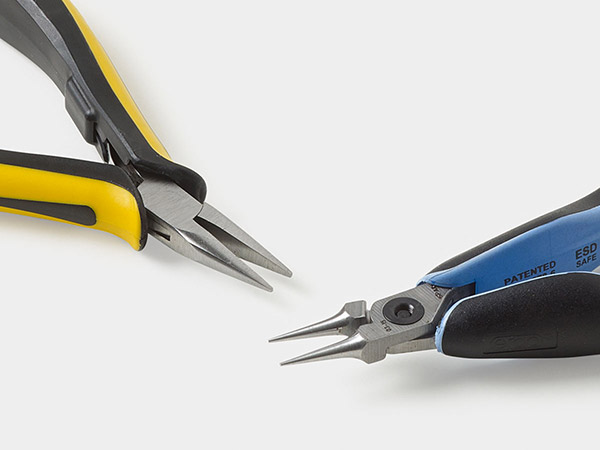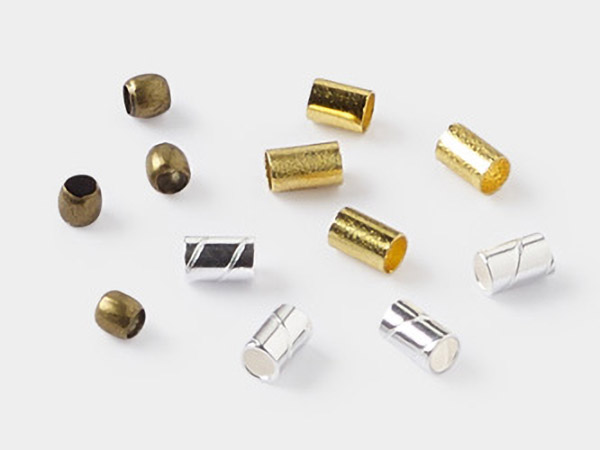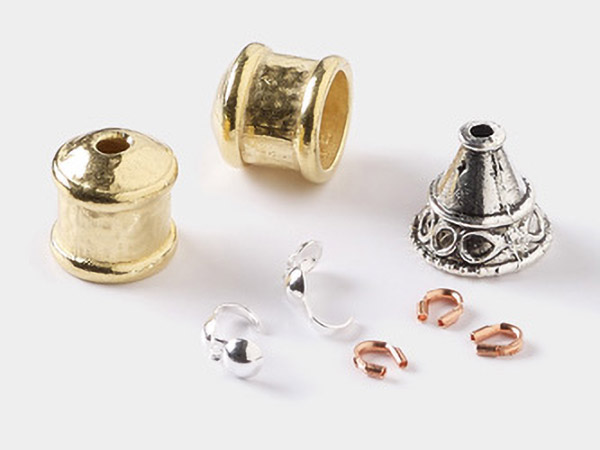Ask the Experts Crimping Q&A
Sometimes when I am working on a bracelet or necklace, the crimp bead breaks off, and I have to start all over again. What am I doing wrong?
- Chris
Make sure you are using crimping pliers, which are specifically designed for just this purpose, making it easy to secure your crimps to Accu-Flex® beading wire and create a professional finish.
Many designer-artists use precious metal crimps as precious metal is malleable enough to withstand the multiple bends needed to secure the crimp. Copper crimp tubes are an alternative for different design types, being just as malleable.
These findings are crimped over the stringing material, which can range in size from 0.012 Accu-Flex® beading wire up to 4mm rubber or leather cording, by compressing the center section of the tube with chain-nose pliers. To color match with the rest of the design, crimp covers can be added over the crimp tube.
Crimp tube findings come in a few styles:
- Crimp tubes are incorporated into your design like crimp beads. String a crimp tube onto the end of your Accu-Flex®, pass the Accu-Flex® through the end of your clasp then back through the crimp tube. Compress the center section to secure the wire to the clasp. Shorter tubes can be hidden with crimp covers.
- Crimp tubes with loops and hook ends can be used as a way to finish off your cord or Accu-Flex® as well as work as your clasp. Be sure to check out the free illustrated instructions on using these crimp tubes.
An alternative to squeeze-style crimp beads and crimp tubes is a finding called Screw-Tite Crimps™. Screw-Tite Crimps not only secure your Accu-Flex® beading wire to your clasp, they also allow you to change your clasp for a different one, should you want a different look. If you're not familiar with Screw-Tite Crimps, be sure to check out our free how-to video as well as printable instructions.
- Tammy Honaman, Author, Jewelry-Making Expert and Educator
Shop for Your Materials Here:
Still can't find what you're looking for?
Submit Your Question




